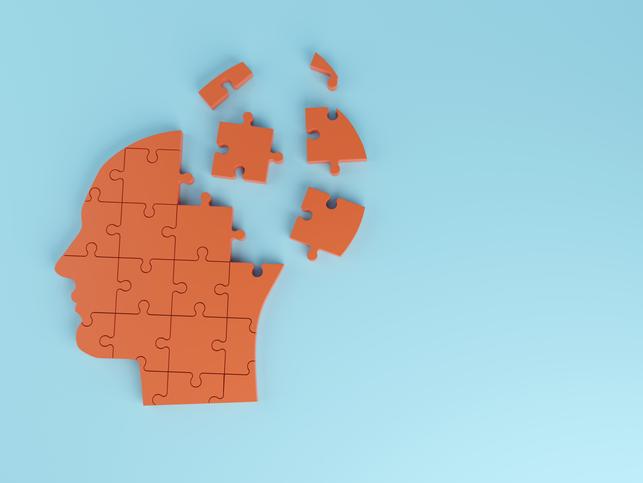
On the neurodivergent campus, language matters
The neurodiversity movement has made great strides, but out-of-date, ableist language is still prevalent, even in academia. Carrie Ballantyne advises us to think about the words we use
We’ve taken great strides forward when it comes to how people who live with autism, attention deficit hyperactivity disorder (ADHD) and other developmental and/or learning disabilities are treated and viewed within society. The neurodiversity movement, which has seen neurodivergent people and their allies celebrate their strengths and call for society to value their differences, has brought about a positive shift in how we consider and respond to neurodivergent individuals.
Unfortunately, language use has not kept pace with this grass-roots movement. Many people still use stigmatising, ableist language to describe neurodivergent people, defining them by their disabilities. It’s often clumsy rather than unkind, but it matters. People might use terms such as “special needs” with good intentions, but the phrase has unwanted connotations.
- A road map to diagnosis and support for autistic women in higher education
- Five steps to support autistic students on their higher education journey
- How to make your university more neurodiverse friendly
The same applies to words such as “normal” or “ordinary”, which take on a far more emotive and critical tone when preceded with “not”. Despite “special” implying the opposite, being on the receiving end of this label can feel demeaning and patronising. Such ableist language and labels can lead neurodivergent people to conceal their symptoms and behaviours, and ultimately under-reporting their needs.
The dangers of ableism
“Ableism” is a term that is often used – and often misunderstood. To put it simply, ableism is presenting one type of person as “the ideal” and assuming that people who are not like that – because of disability or neurodivergence – are inferior. If we hold ourselves to a specific ideal, we are always going to fall short. This applies not only to disability, but also to discussions surrounding race and gender. There cannot be one ideal – diversity is not only necessary but unavoidable. If we follow ableist thinking and, consequently, ableist language, we negate the contribution, creativity and perspective of the full breadth of society. Language choices can help enforce and perpetuate this approach.
Sadly, ableism remains very present in the higher education sector. A recent study of neurodivergent staff found that they were likely to under-report their diagnoses, because they were concerned they would face stigma and discrimination.
It’s not just staff — many students also experience negative perceptions about their ability and their work. This can have a detrimental effect on their mental health and lead to an increase in anxiety and depression due to increasingly low self-esteem. The impact of ableism can result in students performing less well in their studies, rather than their neurodivergence having that effect.
The language that we use to describe ourselves — whether consciously or unconsciously — leads to beliefs about ourselves and others. The neurodiversity movement is making some headway in correcting commonly used (and all-too-easily accepted) ableist language. But there is still some confusion over the correct terminology within communities and in academia. Consider neurodiversity and neurodivergence – aren’t they interchangeable terms? Neurodiversity suggests just that: diversity within neurotypes. But one person cannot be neurodiverse, because that suggests that they are multiple neurotypes. A person can be neurodivergent, meaning that they are different from what is typical.
How to address neurodiverse people
Many research projects have asked neurodiverse individuals how they would like to be addressed. In one study focusing on autism, the majority of the autistic adults and caregivers said they preferred the identity-first approach (“autistic person”), while many professionals preferred the person-first approach (such as “child with autism”). There was a strong consensus among both groups against using “autism spectrum disorder” because they felt it had negative connotations. Many of the people questioned simply preferred “autism” or “autism spectrum”. We should recognise that how someone wants to be labelled or addressed is up to them. Whether they identify as a person with autism or an autistic person, they get to choose.
Within higher education, we should focus on what people can add to our quest for greater knowledge and understanding of the world. To do this, we need to create safe and inclusive spaces, where people feel able to share their experiences and skills. There are already signs that this is happening. Participatory research within academia, where stakeholder communities are directly consulted and engaged with to define the problem and develop the path to a solution, is now not only accepted, but also expected.
We already know the difference such a positive and purposeful use of language can make. No one regrets the demise of terms such as “the handicapped”, “remedial teacher” or “wheelchair-bound”. Language and meaning will continue to evolve. By consciously moving away from using ableist language, we allow neurodivergent staff and students to work in a space where they can access support without stigma. Let’s help them realise their potential by allowing the strengths and qualities they possess to shine through.
Carrie Ballantyne is a reader in psychology at the University of the West of Scotland.
If you would like advice and insight from academics and university staff delivered direct to your inbox each week, sign up for the Campus newsletter.




